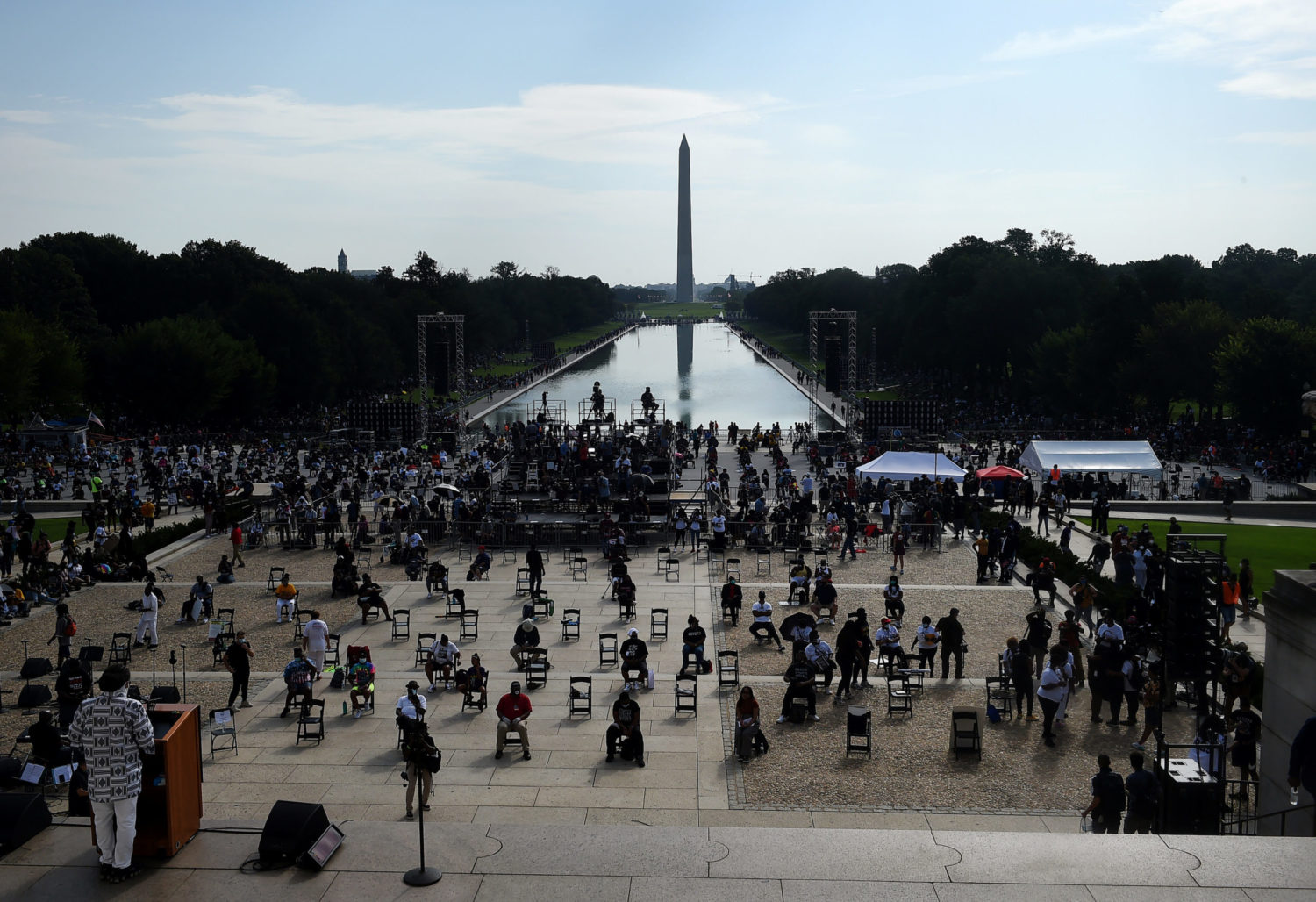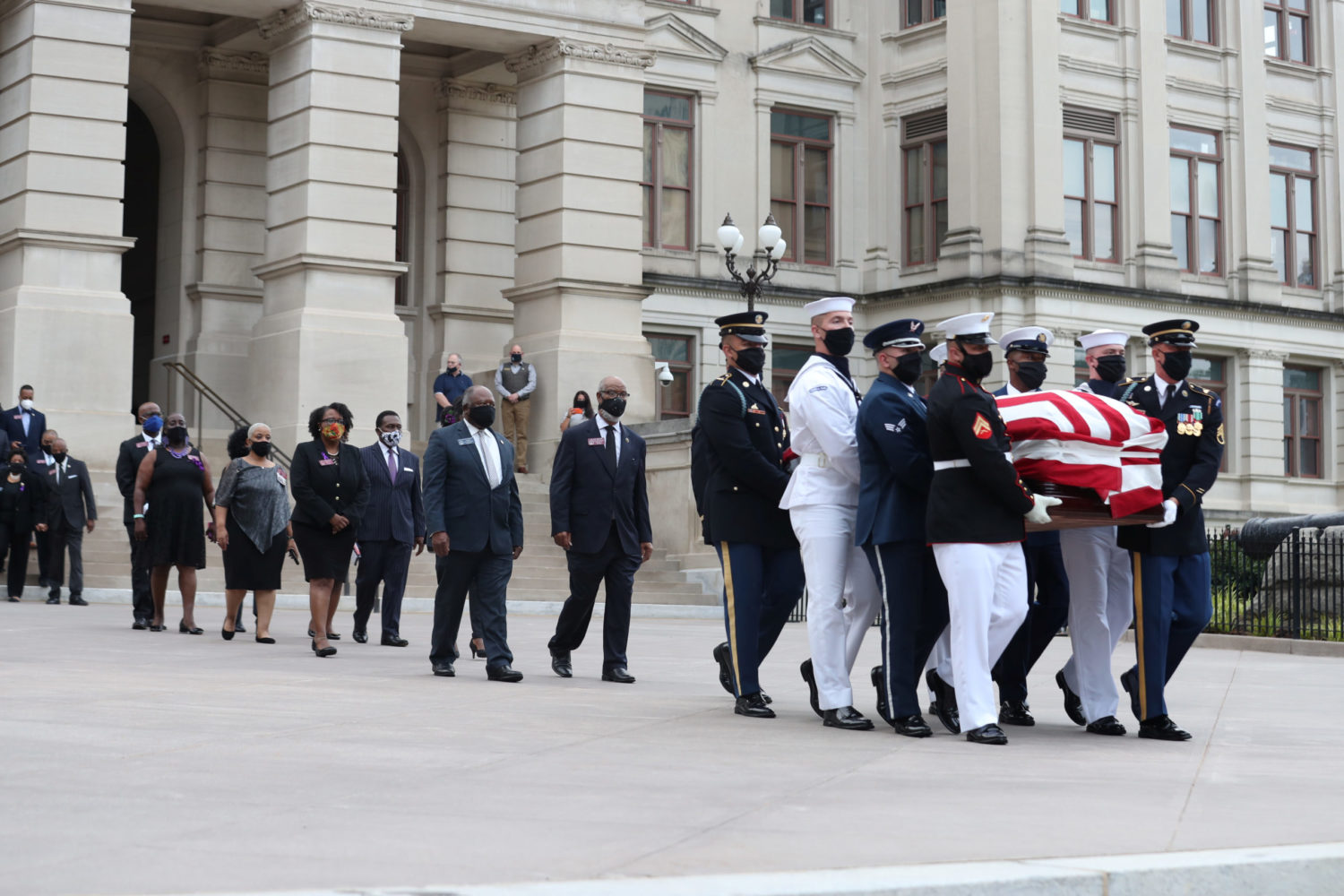
By Katanga Johnson and Jim Urquhart
WASHINGTON (Reuters) – The first Black woman is on a major party presidential ticket, Americans of all races are showing their support for the Black Lives Matter movement and at the same time white nationalists are ramping up recruiting efforts and public activism.
That nationwide backing for America’s stated goal of equal rights for all has been met by a rise in hate-related activities is part of a decades-long pattern in the United States, six scholars and historians say – any expansion of civil rights for a minority group leads to a rise in intolerance.
“Each wave of civil rights progress brings us a little closer to real equity, but there will always be backlash from those who feel threatened by that progress,” said Cynthia Miller-Idriss, director of research with the Polarization and Extremism Research and Innovation Lab at American University in Washington. People who feel vulnerable to change become “eager to recruit and radicalize support to slow things down, even if by use of violence or radicalized propaganda,” she said.
After the first Black president, Barack Obama, was elected in 2008, the number of hate groups “ballooned,” Miller-Idriss said, just as Ku Klux Klan activity grew again after the 1954 Brown v. Board of Ed. decision desegregating schools, and during the 1960’s civil rights movement. Backlashes happened after women got the right to vote, and as LGBTQ rights expanded, too.
One of the things that makes this moment so heated is there’s been a bigger embrace by politicians, businesses and white people in general supporting racial justice movements than in the past, historians and civil rights experts said.
America rests on the “great social challenge of creating a successful harmonious, multiracial democracy,” said Simon Clark, a senior fellow at the Center for American Progress (CAP). The backlash against that accelerated during the Black Lives Matter protests and “is both a political one and a violent, social one,” he said.
Protests against excessive use of force by police and racism swept the United States, and the world, this summer after a Black man, George Floyd, died on May 25 while a white Minneapolis, Minnesota police officer kneeled on his neck.
The latest police shooting of a Black man, Jacob Blake, in Kenosha, Wisconsin on Aug. 23 has sparked more protests that have sometimes become violent.
Two white nationalist groups, who want an independent state for whites, told Reuters their numbers are also increasing, which Reuters could not independently confirm. The National Socialist Movement Corporation and the ShieldWall Network said many of the new prospects reject the Black Lives Matter protesters mainly out of fear the demonstrations will impose on their freedoms, such as the right to bear arms.
“I’ve got guns. I’ve got a lot of bullets and an armor, too. And if people come down my street looking for trouble, I am going to fight it,” Burt Colucci, self-described commander of the Corporation, said a prospective recruit told him in a recent phone call.
The New York-based Anti-Defamation League (ADL) has documented 3,566 “extremist propaganda incidents” and events in 2020, compared to 2,704 in the same period of 2019. Almost 80% of this year’s cases involve white nationalist ideology, the civil rights advocacy organization found. Anti-Semitic incidents and plots and attacks of terrorism among others made up the rest, the ADL said.
MARCH IN WASHINGTON
Patriot Front, a white nationalist group, marched in Washington in February, and flyers and leaflets advertising the group have been found on college campuses from Arizona to Vermont in recent months. White nationalist groups posted messages on Facebook this summer advocating bringing guns to Black Lives Matter protests, and staged demonstrations in Florida and Pennsylvania in July.
While the ethnic and racial diversity of the United States is growing, whites remain a majority, about 60% of all Americans, according to Pew Research Center analysis published a year ago.
One-third of eligible voters in the Nov. 3 elections, in which Senator Kamala Harris of Jamaican and Indian parentage is running on Democratic presidential candidate Joe Biden’s ticket, will be non-white, according to Pew, up from one-quarter in 2000.
Most Americans say they embrace diversity, according to a Reuters/Ipsos opinion poll last year about race, society, and their political engagement. Sixty-three percent said the statement “I prefer to live in a community with people who come from diverse cultures” reflects their point of view.
Among registered Democrats, that affirmative answer jumped to 78%, while among Republicans it dropped to 45%.
In the election campaign, Biden has accused President Donald Trump of stoking divisions. The Trump campaign has said that the president “works hard to empower all Americans.”
‘HEAR THE RAGE’
“I’ve never seen the country so divided – not only divided, but charged, on all sides,” said Billy Roper of the Arkansas-based white nationalist organization, ShieldWall Network.
America has been at similar crossroads before, though, the scholars and historians interviewed by Reuters say.
The Ku Klux Klan, founded at the end of the U.S. Civil War, is the oldest and most violent of white extremist organizations, according to the Southern Poverty Law Center (SPLC) civil rights advocacy group. The KKK, bent on reversing the federal government’s progressive policies during the period known as Reconstruction, used violence against Black people in Southern states, particularly to deny them the newly-won right to vote.
Women’s voting rights, granted in 1920, coincided with a rise of the word “bitch” in newspapers around the country, Representative Pramila Jayapal said recently on the floor of the House of Representatives because, she contends, voting “was just a little too much power for too many men across the country.”
During the early years of the civil rights movement, a number of monuments honoring the war heroes of the Confederacy, the slavery-supporting states that lost the Civil War, were erected in the South, according to a SPLC report.
At least 780 monuments remained in public places in the South and elsewhere in the United States as of February 2019, the report said, among other Confederate symbols that are deeply divisive. Of those monuments, 604 were dedicated before 1950, but 28 others were unveiled from 1950 to 1970 and 34 after 2000.
National legalization of gay marriage in 2015 contributed to a powerful resurgence in conservative politics and legal challenges to LGBTQ rights, advocates said.
Colucci says his group has seen an uptick in calls and emails after racial justice protests and growing corporate and public support for Black Lives Matter and other groups.
“Some of those e-mails, I mean, you could just hear the rage,” he told Reuters.
(Reporting by Katanga Johnson in Washington and Jim Urquhart; Additional reporting by Chris Kahn; Editing by Heather Timmons and Grant McCool)












